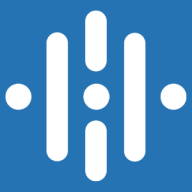
Recorded Future and Abstract Platform are competitive products in threat intelligence and design management, respectively. Recorded Future gains an advantage in threat analysis due to its robust data-processing capabilities, while Abstract Platform holds the upper hand in collaborative design workflows due to its unique features.
Features: Recorded Future offers automated data collection, comprehensive threat intelligence capabilities, and advanced data analysis tools. Abstract Platform provides centralized collaboration, streamlined design work, and effective version control features.
Ease of Deployment and Customer Service: Recorded Future ensures an easy deployment process with extensive support and training available. Abstract Platform, on the other hand, offers a simple integration with existing design workflows but has fewer customer support options. Although Recorded Future offers thorough onboarding, Abstract Platform focuses on ease of use with an intuitive setup.
Pricing and ROI: Recorded Future's pricing reflects its extensive threat intelligence capabilities and provides significant ROI for organizations needing cybersecurity solutions. Abstract Platform, with a lower setup cost, offers substantial ROI through improved design collaboration.

Abstract Platform delivers a seamless design workflow that integrates version control, feedback loops, and design exploration, enhancing collaboration across teams. It is an invaluable tool for design professionals seeking efficiency and synchronization.
Abstract Platform enhances the design process by providing a centralized workspace for teams to manage projects, track changes, and streamline communication. It supports iterative design exploration and ensures easy access to design assets, fostering an environment where creativity and collaboration thrive. By integrating feedback and version control, it helps maintain a clear and organized design history, reducing miscommunications and improving project timelines.
What are the key features of Abstract Platform?Abstract Platform is widely adopted in industries like technology and creative services, where efficient design processes are crucial. Businesses in tech leverage its version control to maintain a cohesive development cycle, while creative agencies benefit from its ability to streamline feedback and approvals, enhancing project turnaround times.
Recorded Future is a powerful and effective cyber threat intelligence (CTI) platform that aims to empower administrators to protect their organizations from threats, both known and unknown. The machine learning engine that Recorded Future utilizes can process the same amount of data that 9,000 analysts working five days a week, eight hours a day for an entire year can process. It simplifies threat detection and remediation so that organizations can focus on other tasks.
Recorded Future Benefits
Some of the ways that organizations can benefit by choosing to deploy Recorded Future include:
Recorded Future Features
Some of the many features Recorded Future offers include:
Reviews from Real Users
Recorded future is a solution that stands out when compared to its top competitors. Two major advantages it offers are the threat research tools that it provides and the threat monitoring capabilities that it enables users to leverage.
A security operations lead at a comms service provider writes, “Recorded Future covers a lot of different use cases. For example, we are using it for threat intelligence research. We do use the tool to make active research on what is found around the threat. We look at patterns, for example, and see what can be elaborated on from that.”
They also write, “We can also use it for active monitoring in the customer interface. We can monitor the business side of a campaign. We can monitor for specific threats or market activity on the dashboard. We can develop queries to run in a continuous mode in order to get the best reviews.”
We monitor all Threat Intelligence Platforms reviews to prevent fraudulent reviews and keep review quality high. We do not post reviews by company employees or direct competitors. We validate each review for authenticity via cross-reference with LinkedIn, and personal follow-up with the reviewer when necessary.